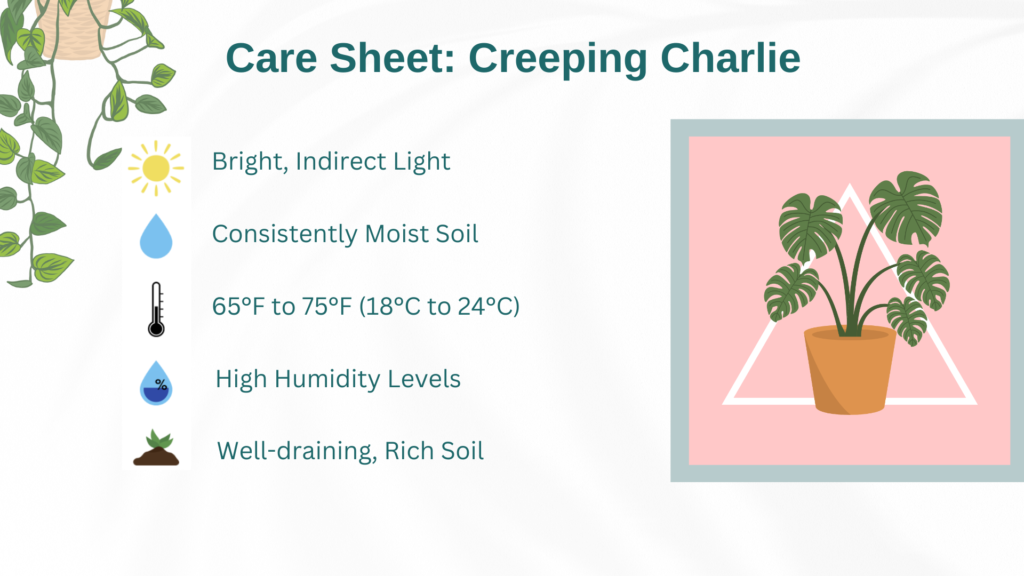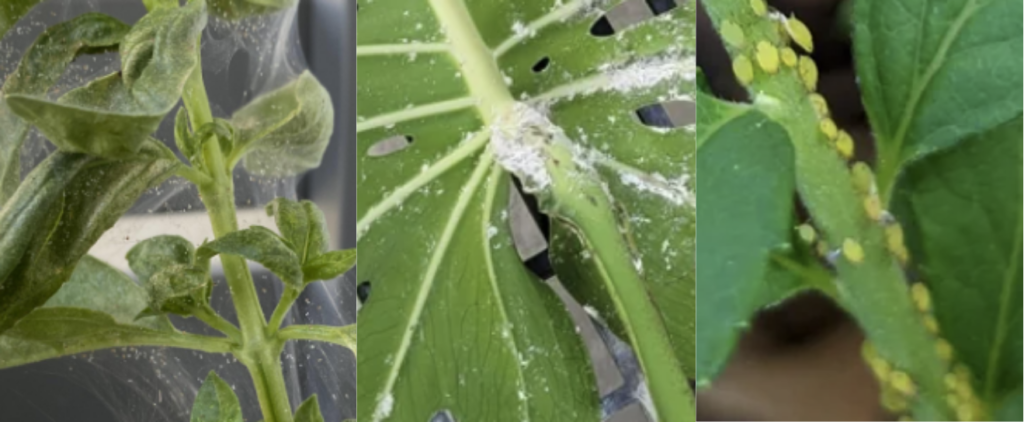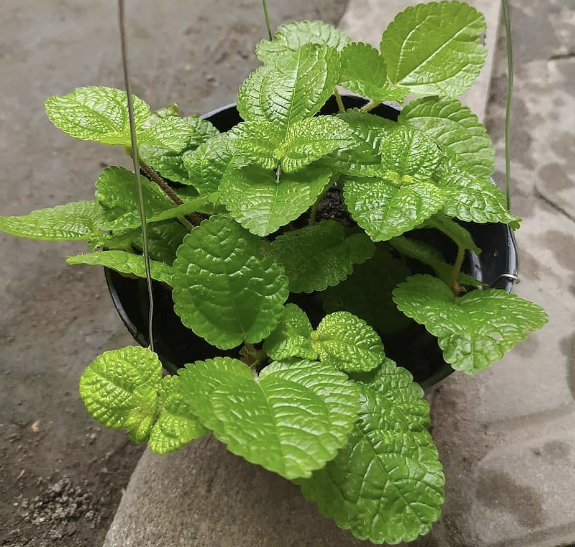Creeping Charlie, or Pilea nummulariifolia, is often mistaken for other trailing plants like Swedish Ivy or Glechoma hederacea, but it has distinctive features that make it stand out.
This tropical plant has small, rounded leaves with scalloped edges and a bright green color.
The kidney-shaped leaves are slightly textured and grow densely along the square stems, giving the plant a lush, creeping look.
Although Pilea nummulariifolia is favored as a houseplant, Glechoma hederacea, also called ground ivy, is an invasive species often seen as a nuisance weed in North America.
When choosing a Creeping Charlie, it’s essential to ensure you’re getting the correct species.
Size
A Creeping Charlie plant typically grows to 6 inches in height, with trailing vines that can extend up to 2 feet or more.
This growth pattern makes it ideal for hanging baskets, shady areas, or as a ground cover in larger areas.
Its compact height allows it to thrive indoors, while its ability to spread makes it a valuable addition to shady spots outdoors.
Care

Light Requirements
Creeping Charlie prefers bright, indirect light, which helps maintain its vibrant green color and promotes healthy new growth.
It can adapt to partial shade, making it a great option for shade-loving plants, but in low-light conditions, it may become leggy and sparse.
Direct sunlight or full sun should be avoided as it can scorch the broadleaf weeds, leading to brown leaves or crumbling foliage. For indoor plants, a grow lamp can provide the right amount of light during darker seasons.
Watering Needs
Creeping Charlie thrives in moist soil and benefits from regular watering. Water thoroughly when the top inch of soil feels dry, ensuring that excess water drains out to prevent root rot.
The best way to water is to use clean water or even filtered water if your tap water is hard or chlorinated.
During winter, when the growing season slows, reduce watering slightly. Always check soil moisture levels, as too much water can lead to yellowing or sad-looking houseplants.
A water calculator can help determine the right amount based on environmental factors like temperature and humidity.
Temperature
As a tropical plant, Creeping Charlie thrives in temperatures between 65°F and 75°F (18°C to 24°C).
It struggles in cold climates and should be moved indoors if temperatures drop below 50°F (10°C).
Outdoor growers should follow the USDA hardiness zone recommendations to avoid damage.
Humidity
Creeping Charlie loves high humidity and flourishes in humid areas like bathrooms or kitchens.
In drier climates or during winter, use a small humidifier, a humidity tray, or mist the leaves to maintain moisture.
Keep misting light, as too much can encourage bacterial leaf spot or fungal diseases.
Soil Requirements
The plant thrives in well-draining soil with a mix of peat moss and perlite to retain moisture without becoming soggy.
While Creeping Charlie can adapt to various soil types, it performs best in nutrient-rich mediums that support plant growth.
Ensure the pot or container has drainage holes to protect the root system from waterlogging.
Fertilizer
To keep your plant lush and healthy, use a water-soluble fertilizer monthly during the growing season (spring and summer).
A balanced fertilizer replenishes the plant’s nutrients and encourages new leaves and growth. Skip fertilizing during fall and winter, as the plant enters a period of dormancy.
Potting and Repotting
Repot your Creeping Charlie every 1-2 years or when the entire plant outgrows its current pot. Use a container that’s only slightly larger, with good soil drainage.
Spring or early summer is the best time to repot. Be gentle with the root system, as disturbing it too much can stress the plant.
Pruning
Pruning encourages new growth and prevents the plant from becoming leggy. Regularly trim brown leaves, yellowing foliage, or overgrown stems to maintain a compact shape.
Pinching back growth tips can also promote bushiness. Remove any disease-prone plant material to aid in disease prevention.
Propagation
Creeping Charlie is easily propagated through stem cuttings:
- Cut a stem with a few healthy leaves.
- Remove the bottom leaves and place the stem in clean water or moist soil.
- Roots will appear in 1-2 weeks, after which the cutting can be planted in soil.
This method is perfect for creating new plants or sharing with a family member or friend.
Pests
Though generally pest-resistant, Creeping Charlie may attract spider mites, mealybugs, or aphids:
- Spider Mites: Thrive in dry conditions; increase humidity or use insecticidal soap.
- Mealybugs: Dab them with a cotton swab dipped in rubbing alcohol.
- Aphids: Rinse off with water or apply insecticidal soap.

Diseases
Creeping Charlie is prone to diseases like root rot and leaf spot:
- Root Rot: Prevent by avoiding overwatering and using soil with good drainage.
- Leaf Spot: Caused by excess moisture on leaves. Water at the base and remove infected leaves.
Is Creeping Charlie Toxic?
Unlike many toxic plants, Creeping Charlie (Pilea nummulariifolia) is non-toxic to humans and pets.
However, its relative Glechoma hederacea can be toxic in large quantities, so ensure the species is correctly identified.
Common Issues and How to Fix Them
- Leggy Growth: If your Creeping Charlie is looking sparse or leggy, it likely needs more light. Move it closer to a window, or pinch back growth to encourage bushiness.
- Yellowing Leaves: Yellow leaves can be a sign of overwatering or poor drainage. Make sure your plant isn’t sitting in water and adjust your watering routine.
- Leaf Drop: This is often due to sudden changes in temperature or humidity. Keep the plant in a stable environment, away from drafts and heating vents.
Difficulty Level
Creeping Charlie is an easy-care plant, making it a great choice for both beginners and experienced gardeners.
By ensuring the right balance of light, water, and humidity, this shade-loving plant will thrive in a variety of settings, from hanging baskets to ground covers.
The Right Species?
When selecting a Creeping Charlie, look for Pilea nummulariifolia for indoor growing.
Be cautious not to confuse it with Glechoma hederacea, a different plant often called Creeping Charlie, but which is more of an outdoor ground cover.
.Final Thoughts
Creeping Charlie (Pilea nummulariifolia) is a versatile ornamental plant that’s easy to care for and adds charm to any space. Its bright green foliage, adaptability to shady areas, and tolerance for various environmental factors make it a must-have for indoor gardeners.
Whether you’re using it to fill shady spots or creating a lush hanging basket, Creeping Charlie will reward you with lush, trailing beauty.

